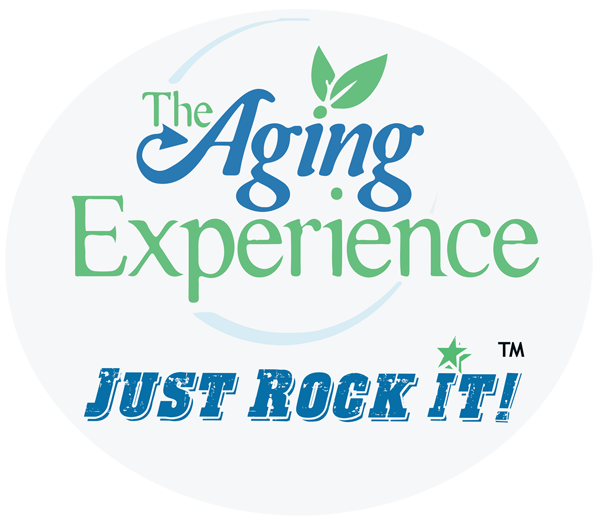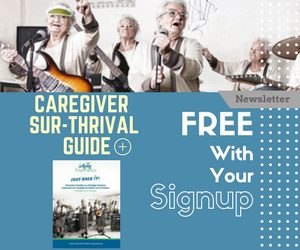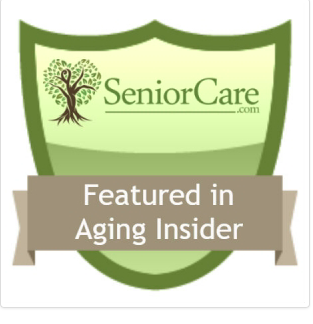Resveratrol in Red Wine, Chocolate, Grapes Not Associated With Improved Health
 Resveratrol in Red Wine, Chocolate, Grapes Not Associated With Improved Health – oh no after all the hoopla comes this. The antioxidant resveratrol found in red wine, chocolate and grapes was not associated with longevity or the incidence of cardiovascular disease, cancer and inflammation, according to author: Richard D. Semba, M.D., M.P.H., of the Johns Hopkins University School of Medicine, Baltimore, Md., and colleagues. The ÛÏFrench ParadoxÛ of a low incidence of coronary heart disease despite a diet high in cholesterol and saturated fat in France has been attributed to the regular intake of red wine, in particular, to resveratrol and other polyphenols contained in wine. Some preliminary evidence also suggests that resveratrol may have anti-inflammatory effects, prevent cancer, and decrease blood vessel stiffness. The participants (a sample of 783 men and women 65 years or older) were part of the Aging in the Chianti Region study from 1998 to 2009 in two Italian villages. The authors sought to determine if resveratrol levels achieved through diet were associated with inflammation, cancer, cardiovascular disease, and death. Levels were measured using 24 hour urine collections to look for breakdown products of resveratrol. During nine years of follow-up, 268 participants (34.3 percent) died; of the 639 participants free of cardiovascular disease at enrollment, 174 (27.2 percent) developed cardiovascular disease during the follow-up; and of the 734 participants who were free of cancer at enrollment, 34 (4.6 percent) developed cancer during the follow-up. Urine resveratrol metabolite levels were not associated with death, inflammation, cardiovascular disease or cancer. Discussion: ÛÏThis study suggests that dietary resveratrol from Western diets in community-dwelling older adults does not have a substantial influence on inflammation, cardiovascular disease, cancer, or longevity.Û If you watch the 60 Minutes segment on the 90+ Study, you will also find that people who had two alcoholic drinks of any kind lived longer. Check it out.
Resveratrol in Red Wine, Chocolate, Grapes Not Associated With Improved Health – oh no after all the hoopla comes this. The antioxidant resveratrol found in red wine, chocolate and grapes was not associated with longevity or the incidence of cardiovascular disease, cancer and inflammation, according to author: Richard D. Semba, M.D., M.P.H., of the Johns Hopkins University School of Medicine, Baltimore, Md., and colleagues. The ÛÏFrench ParadoxÛ of a low incidence of coronary heart disease despite a diet high in cholesterol and saturated fat in France has been attributed to the regular intake of red wine, in particular, to resveratrol and other polyphenols contained in wine. Some preliminary evidence also suggests that resveratrol may have anti-inflammatory effects, prevent cancer, and decrease blood vessel stiffness. The participants (a sample of 783 men and women 65 years or older) were part of the Aging in the Chianti Region study from 1998 to 2009 in two Italian villages. The authors sought to determine if resveratrol levels achieved through diet were associated with inflammation, cancer, cardiovascular disease, and death. Levels were measured using 24 hour urine collections to look for breakdown products of resveratrol. During nine years of follow-up, 268 participants (34.3 percent) died; of the 639 participants free of cardiovascular disease at enrollment, 174 (27.2 percent) developed cardiovascular disease during the follow-up; and of the 734 participants who were free of cancer at enrollment, 34 (4.6 percent) developed cancer during the follow-up. Urine resveratrol metabolite levels were not associated with death, inflammation, cardiovascular disease or cancer. Discussion: ÛÏThis study suggests that dietary resveratrol from Western diets in community-dwelling older adults does not have a substantial influence on inflammation, cardiovascular disease, cancer, or longevity.Û If you watch the 60 Minutes segment on the 90+ Study, you will also find that people who had two alcoholic drinks of any kind lived longer. Check it out.
Snacking Increases Belly Fat More So Than Overeating at Meals
 Snacking Increases Belly Fat More So Than Overeating at Meals. Researchers from The Netherlands found that snacking on high-fat and high-sugar foods was independently associated with abdominal fat and fatty liver. The study published in Hepatology, a journal of the American Association for the Study of Liver Diseases, provides the first evidence that eating more often, rather than consuming large meals, contributes to a fatty liver independent of body weight gain. These findings suggest that by cutting down on snacking and encouraging three balanced meals each day over the long term may reduce the prevalence of non-alcoholic fatty liver disease. In the U.S. the Centers for Disease Control and Prevention (CDC) report that 36% of adult Americans and 17% of children in the country are obese. Studies link obesity to the accumulation of abdominal fat and fat in the liver, making non-alcoholic fatty liver disease one of the most prevalent diseases of the liver. ÛÏAmerican children consume up to 27% of calories from high-fat and high-sugar snacks,Û said lead author Dr. Mireille Serlie with the Academic Medical Centre Amsterdam in The Netherlands. Results showed that high calorie diets increased BMI. Eating more frequent meals significantly increased triglycerides in the liver, while larger sized meals did not. So eat more balanced meals and snack less. Easy to say and hard to do.
Snacking Increases Belly Fat More So Than Overeating at Meals. Researchers from The Netherlands found that snacking on high-fat and high-sugar foods was independently associated with abdominal fat and fatty liver. The study published in Hepatology, a journal of the American Association for the Study of Liver Diseases, provides the first evidence that eating more often, rather than consuming large meals, contributes to a fatty liver independent of body weight gain. These findings suggest that by cutting down on snacking and encouraging three balanced meals each day over the long term may reduce the prevalence of non-alcoholic fatty liver disease. In the U.S. the Centers for Disease Control and Prevention (CDC) report that 36% of adult Americans and 17% of children in the country are obese. Studies link obesity to the accumulation of abdominal fat and fat in the liver, making non-alcoholic fatty liver disease one of the most prevalent diseases of the liver. ÛÏAmerican children consume up to 27% of calories from high-fat and high-sugar snacks,Û said lead author Dr. Mireille Serlie with the Academic Medical Centre Amsterdam in The Netherlands. Results showed that high calorie diets increased BMI. Eating more frequent meals significantly increased triglycerides in the liver, while larger sized meals did not. So eat more balanced meals and snack less. Easy to say and hard to do.
Saving for Retirement – Yes Millenial This Means You
 I came acrossåÊWilliam J. Bernstein, an investment adviser and author on financial subjects in a New York Times article a few months ago. And it occurred to me that we have a similar platform. I talk about Educated Aging, that we need to plan for our aging sooner in life – physically, financially, emotionally. In a previous post, I shared information about how Millenials are already behind the eight ball when it comes to saving.
I came acrossåÊWilliam J. Bernstein, an investment adviser and author on financial subjects in a New York Times article a few months ago. And it occurred to me that we have a similar platform. I talk about Educated Aging, that we need to plan for our aging sooner in life – physically, financially, emotionally. In a previous post, I shared information about how Millenials are already behind the eight ball when it comes to saving.
Bernstein has authored ÛÏIf You Can,Û a concise, no-nonsense instruction manual on saving and investing for retirement. He occasionally makes it available free as an e-book, no strings attached, on his website.
On his site, he states: “For years I’ve thought about an eleemosynaryåÊproject to help today’s young people invest for retirement because, frankly,åÊthere’s still hope for them, unlike for most ofåÊtheir Boomer parents. All they’ll have toåÊdo is toåÊput away 15% of their salaries into a low-cost target fund or a simple three-fund index allocation for 30 to 40 years. Which is pretty much the same as saying that ifåÊsomeone exercises and eats a lot less, he’ll lose 30 pounds. Simple, but not easy.
Not easy because unless the millennialsåÊlearn a small amount about finance, they’ll fall victim to theåÊFive Horsemen of Personal Finance Apocalypse: failure to save,åÊignorance of financial theory, unawareness of financialåÊhistory, dysfunctional psychology, and the rapacity of the investment industry.
Since this is a booklet, suitable for reading on a Kindle, computer monitor, oråÊmobile device, and will take onlyåÊan hour or two to read, it’s not a complete solution. It’s a roadmap,åÊa pointer in the right direction.åÊThe booklet isåÊavailableåÊfor freeåÊinåÊacrobat, mobi, and Kindle formats.åÊYou canåÊalso download itåÊfrom the AmazonåÊKindle Store. I’d like to give it away for free in that location too, but Amazon requires that I charge $0.99. If I say “Mother may I,” though, I’m allowed to make the Kindle StoreåÊdownload freeåÊforåÊ24 hoursåÊevery now and then: the nextåÊdays, tentatively,åÊwill beåÊMay 4th and 5th, 2014, and I’ll try to make additionalåÊfree days coincide with media attention.”
I would pick up a copy soon.
Is There a Cancer Risk When Going to the Nail Salon? (VIDEO)
Is There a Cancer Risk When Going to the Nail Salon?









